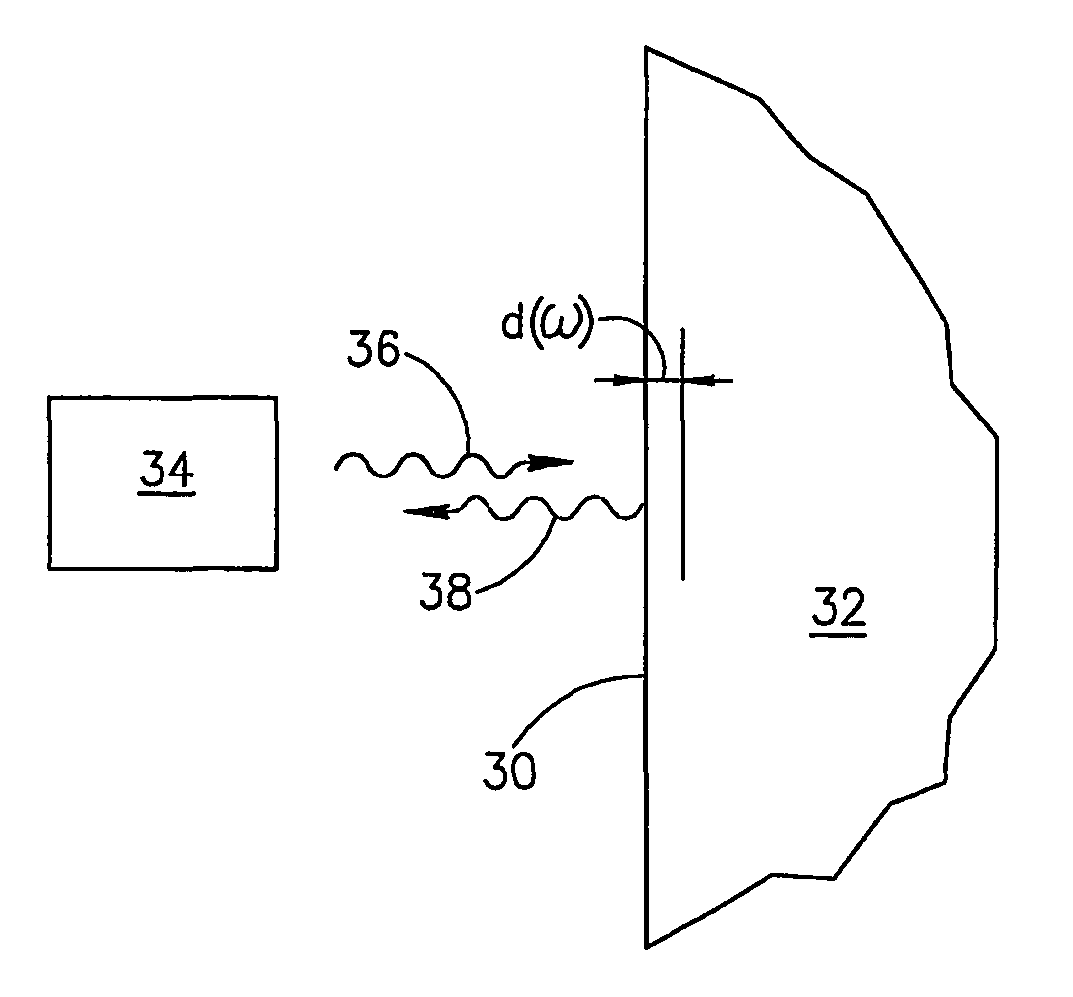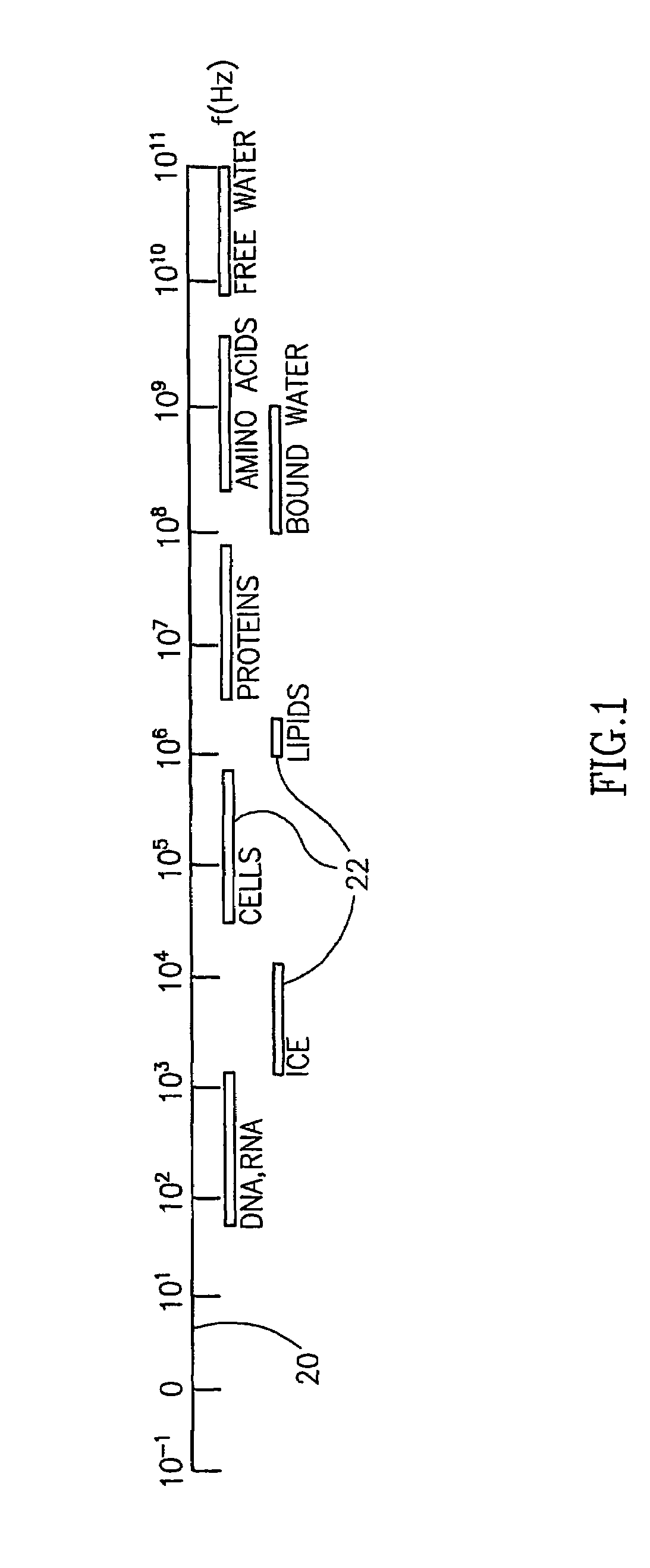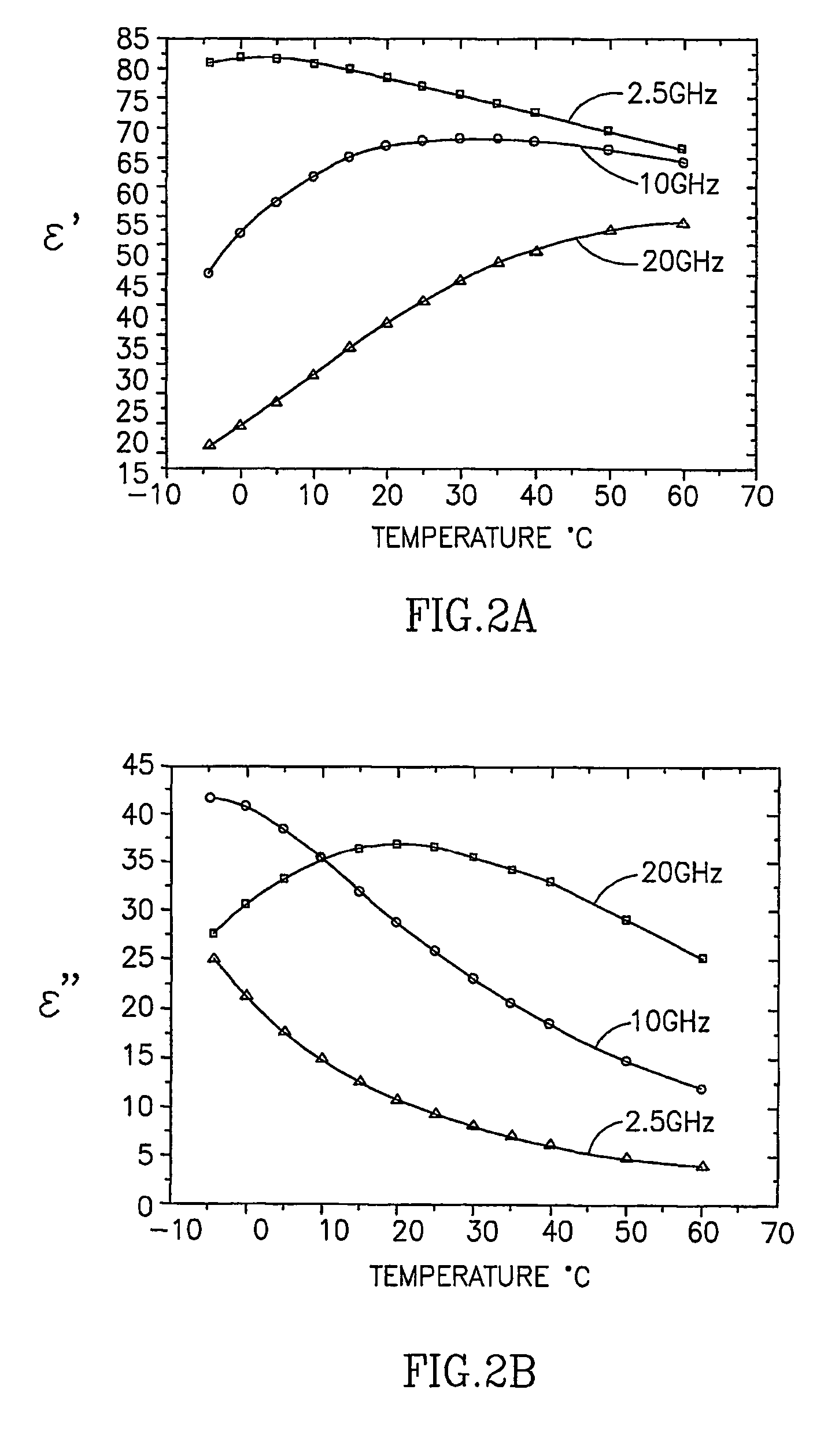Permittivity based temperature measurement and related methods
- Summary
- Abstract
- Description
- Claims
- Application Information
AI Technical Summary
Benefits of technology
Problems solved by technology
Method used
Image
Examples
Embodiment Construction
[0055]FIG. 1 schematically shows dielectric relaxation frequencies for types of molecules and structures commonly found in biological systems. Dielectric relaxation frequency is shown along an axis 20. Below and along axis 20 are witness bars 22, each labeled with a molecule type or structure. Each witness bar 22 indicates a range of dielectric relaxation frequencies that is characteristic of the type of molecule or structure that labels the witness bar. A structure or molecule contributes to the dielectric permittivity of a material in which it is found at frequencies below its dielectric relaxation frequency. For frequencies above its dielectric relaxation frequency, the contribution of the structure or molecule to the dielectric permittivity of the material decreases rapidly and for frequencies substantially greater than its dielectric relaxation frequency the contribution to the dielectric permittivity is substantially zero.
[0056]From FIG. 1 is seen that water, in liquid form, h...
PUM
 Login to View More
Login to View More Abstract
Description
Claims
Application Information
 Login to View More
Login to View More - R&D
- Intellectual Property
- Life Sciences
- Materials
- Tech Scout
- Unparalleled Data Quality
- Higher Quality Content
- 60% Fewer Hallucinations
Browse by: Latest US Patents, China's latest patents, Technical Efficacy Thesaurus, Application Domain, Technology Topic, Popular Technical Reports.
© 2025 PatSnap. All rights reserved.Legal|Privacy policy|Modern Slavery Act Transparency Statement|Sitemap|About US| Contact US: help@patsnap.com



